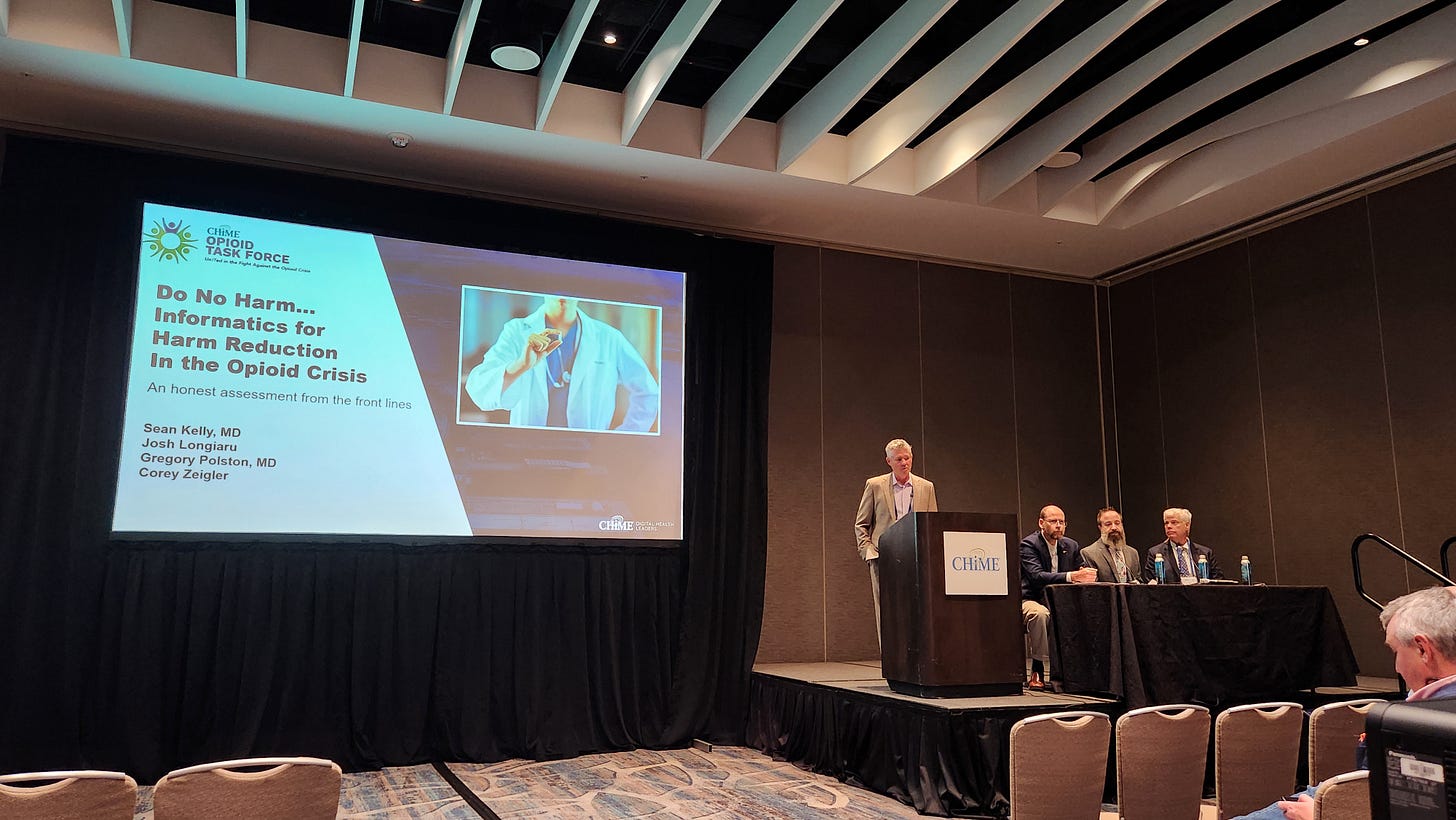Insights from the 2024 CHIME Fall Forum
Health IT’s High Hopes, Hype, and a Touch of “Maverick”
Every health IT conference seems to follow a familiar pattern—hope, hype, and a dose of over-the-top optimism. CHIME 2024 Fall Forum was no exception. There wasn’t the ocean of vendor booths hawking technology that looked like something from a sci-fi script, but there were plenty of conversations that contained a lot of hype. But there were as many that were real-world solutions to real-world issues.
An example is the work being done to tackle the opioid epidemic, a mission I’m particularly close to through my role with the Opioid Task Force. You may wonder why a health IT organization is addressing such a human crisis. But as both an ER physician and informaticist, I can attest that the technology has made life-saving information available right when it’s needed. Few use cases have directly illustrated to me more clearly how having information readily accessible can save lives while lacking it can lead to tragedy.
There were case studies of real innovation, like the work being done by Artisight, Guthrie Clinic, SSM Health, and Memorial Healthcare (Florida), showcasing virtual nursing as a way to reduce patient falls, decrease nursing burnout, and boost patient engagement. What I found particularly compelling was that they didn’t just take an existing process and pave a digital cow path. Instead, they used technology to reinvent the process entirely—creating new models of care that are more than the sum of its parts (more on that in a bit).
This was my fifth (or sixth?) time at CHIME, and each year it seems to get better. A colleague recently pointed out that this is certainly due to the “network effect”—the more people you know, the more valuable the conference becomes. And I know more people every year. The scheduled talks and panels are insightful, but the real magic happens in those casual conversations that can only happen in person. On the bus to the golf outing, I talked with a colleague about remote work. Post-pandemic, I became a staunch advocate for remote flexibility. Now, however, I’ve recognized the enormous value of face-to-face interaction—it’s these connections that build trust and the intellectual collisions that spark innovation.
I noticed that one recurring theme in these conversations was our collective struggle to fully leverage the technology that’s tantalizingly within reach. Take the area that is most familiar to me, Epic. Many (non IT) executives decide to implement it, expecting it to be a silver bullet for all operational challenges. But once the initial excitement wears off, they often discover it’s not quite that simple. We need to be proactive in finding ways to optimize, iteratively improving our workflows and data use. The catch? These efforts need funding—something that’s becoming harder to come by in today’s provider landscape. The irony is that investing in optimization could lead to long-term financial gains, but you have to be patient and take a bit of a leap of faith. The yield will not be immediately visible in the first quarter or even year. It has to be a strategic and cultural commitment that will likely take years (or even decades).
This same dynamic seems to hold true for AI. Many leaders are convinced that AI will magically boost productivity, improve patient satisfaction, and reduce clinician burnout. But AI isn’t an “easy button.” It requires foundational work—data governance, cleaning raw data, and refining it into something usable. Just as with other technology, it demands more than just flipping a switch or buying a magical vendor’s product; it calls for a commitment to the often unglamorous work of maintaining, fine-tuning and (gasp) talking to the end user clinician.
So, my big takeaway from CHIME this year? We need to return to the fundamentals—not by simplifying our systems into featurless grey boxes but by getting back to the foundational elements. Data governance, interoperability, and core technologies should be priorities. When these building blocks are in place, we can nimbly reimagine processes, as shown by the evolution of virtual nursing from a simple “sitter” service to a command center for hospital operations. It’s like the difference between having one nurse watch one patient and having an entire system that coordinates everything in real-time—a bit like the AWACS planes that orchestrate complex military operations.
And speaking of aircraft, the conference theme was “Maverick.” They even had a Tom Cruise look-alike for photos, but maybe the real IT heroes are less like fighter pilots with flashy call signs and more like the mechanics who keep those planes flying. After all, it’s the people behind the scenes—the ones fine-tuning and iterating—who ensure that our health systems function, improve, and innovate.





